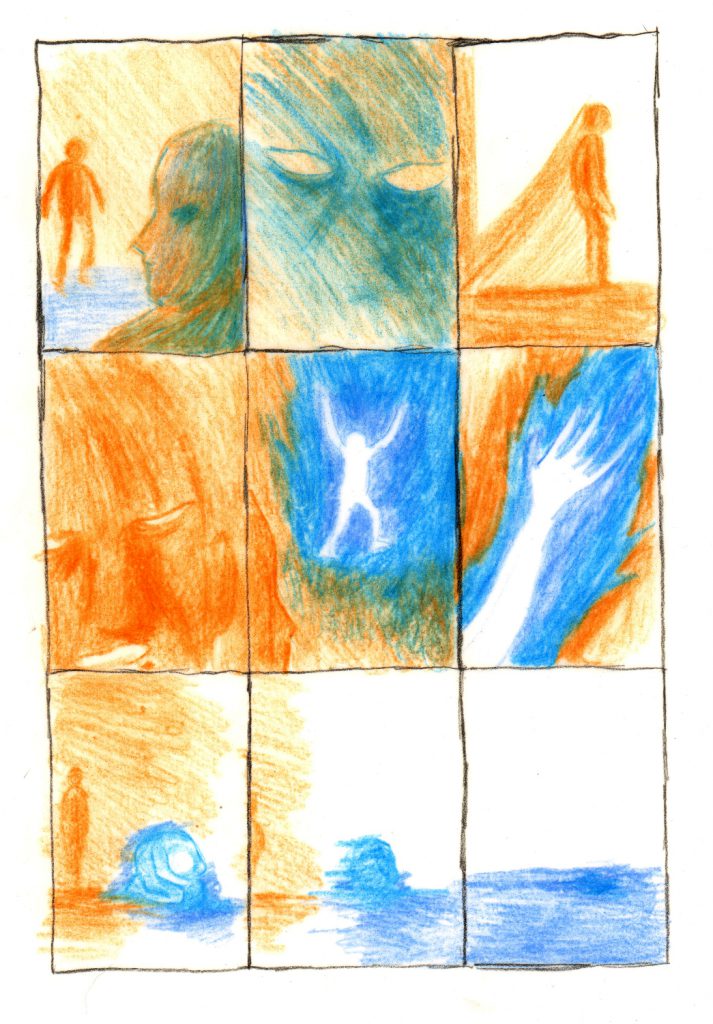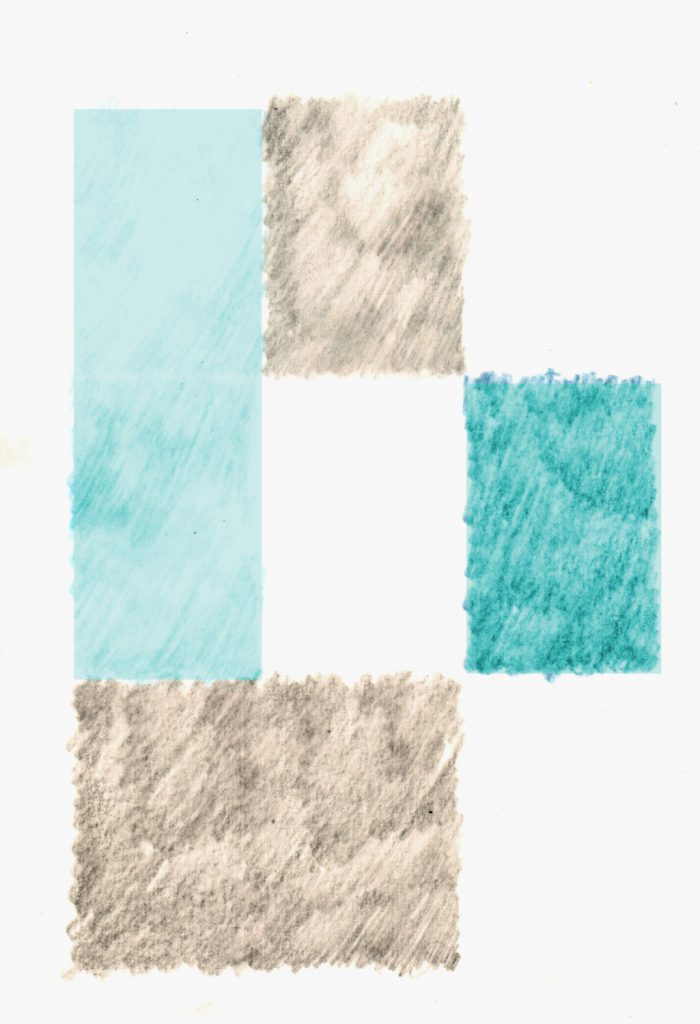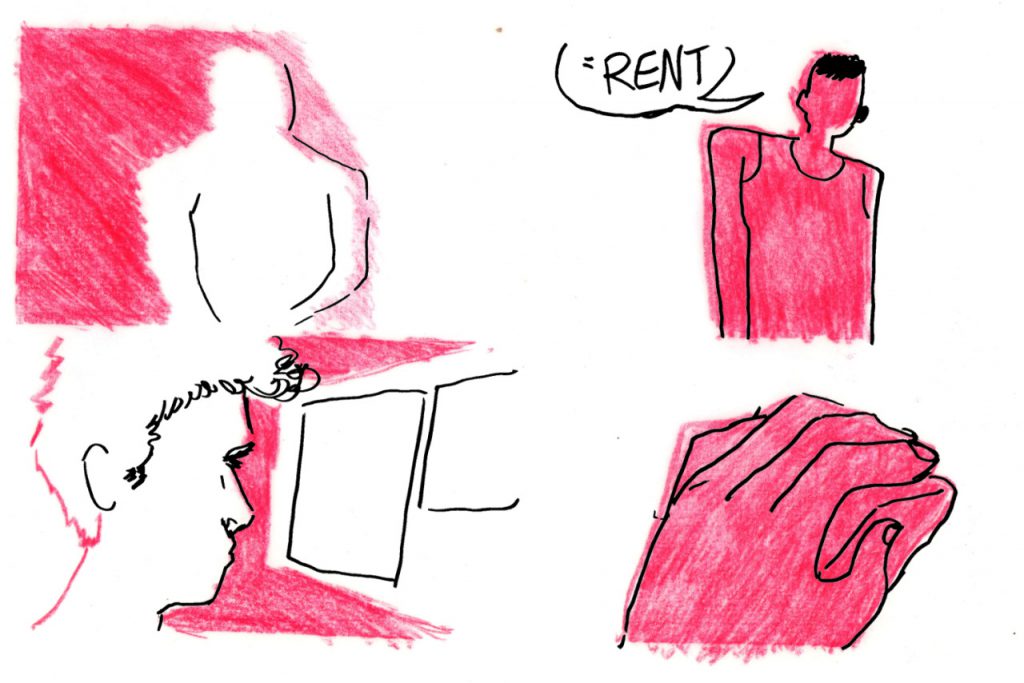Gabriella Tito reports in from Orlando, FL, with this process meditation.
—————————————————————————————————
Hi all! I’m here to talk a bit about how we reflect ourselves in comics. Now, I won’t break down the psychology or anything, or go into how “mainstream comics” are a reflection of our society, but I think it’s safe to say that whether we realize it or not, a part of us is “merged” into our comics. The most obvious would be an auto-bio comic. Even if it’s not about a character that looks like you or is intended to be you, they still could represent a certain ideology or interest you may have.

So what about comics without characters? Abstract comics? Excellent point! From my own experience in making abstract comics and comics without relatable humans, I realize I have drawn content from a particular emotion or thought I was feeling at the time.

Maybe a song inspired me to put something on paper. You probably have done this too, given the nature of abstract works. Usually, the less I thought about the content, the more fluid the comic was.

Abstract comics, and it goes without saying, abstract art in general, is filled with more character than meets the eye. Abstract works can be charged with so many emotions, and the thoughts the creator has, and they can grab the audience so much that they might even relate themselves to that specific work.

It’s not a mistake that this leads to why good representation is always important, simply because of the fact that the audience is always trying to find themselves in characters or concepts. Where do they fit into this? If the characters are reflections of the creator or intention, what can it say about them?
Now, this doesn’t apply 100% of the time, but it is a real possibility that does happen. These are thoughts a creator should always be aware of, but also be mindful of how far they push it. In any case, this brings us back to how we reflect ourselves in creative mediums.

I’m aware that what I’m saying may not line up with your opinions and that’s OK. These are just some reoccurring ideas I’ve thought about when in the process of making a comic. I’m curious if other cartoonists think of the same things.
—————————————————————————————————
Gabriella Tito is a cartoonist living in Orlando, FL. She is currently contributing to Comics Workbook through her own comics and article tidbits and is a graduate of Frank Santoro’s Correspondence Course. You can find more of her work HERE.
I notice that including aspects of myself and others around me in my comics is inevitable. Usually it’s unintended and I don’t realize it until someone asks. “Is this about when you _______?” To which I say, “No it–well actually that makes sense.”
Additionally, I’ve read a number of autobiographies of people and artists I respect; and their characters, personalities, and aspects of their lives mold my own characters and their lives. Especially their most admirable qualities.
its the sort of thing where theres an instance to use certain representations. Sometimes what makes someone love a story is looking at a character that seems like someone you COULD know, like with such nuance that it feels it has to be a real person, though it may not be the case. other times its like thinking about the roman statues, that have to have character enough to empathize with but are in a sense an archtypical slate to leave “room for the viewer”. Like allowing a different type of participation, which is what I think youre getting at here, Gabriella. A lot of older manga eschews the creating of a “new” character for every work, instead you’ll see the “same guy” in Tatsumi’s or Tsuge’s (most gekigas) work though they arent actually, without being a cop-out. This is pushed completely with “figureless” works or implied narratives, which really have a sort of trust between viewer and maker- there’s more responsibility given to the reader, or maybe more respect? giving room to fill in all the blanks and be happy however they will be.Just how I see things.
Some interesting points Gabriella!
This is something I have been thinking about on and off for a few years regarding my own work. I consider my own work an expression of myself and my ideas, but the method my audience seems most likely to interact with my art is by identifying with it. I hear “I relate to this”, “It me”, or “gpoy” a fair bit. When you’re trying to express or represent a specific feeling, sometimes the worst thing you can hear is “omfg this is totally me” because, no, it’s not.
Also thought your interpretation of abstract comics was nice. Usually when I’m looking at abstract comics I’m appreciating their formal drawing values, or use of the comics grid. Those big emotional/semi-spiritual reactions to abstract art in regards to abstract comics was something I may have forgotten about. *starts singing b.joel’s for the longest time*
For me, I think it’s definitely OK when people are like “I can relate to this in some sort of way” because a lot of people can! (like a comic about being broke or something) But I can see when it’s a more nuanced, personal story about YOUR thoughts and feelings but then suddenly someone goes OMG ITS ME. Makes you wanna go “No it’s not it was about me, not you!”
Abstract art is really complex! You can either see a lot of emotion in it or as you said appreciate the formal drawing values. And either way is totally fine, its all subjective 🙂